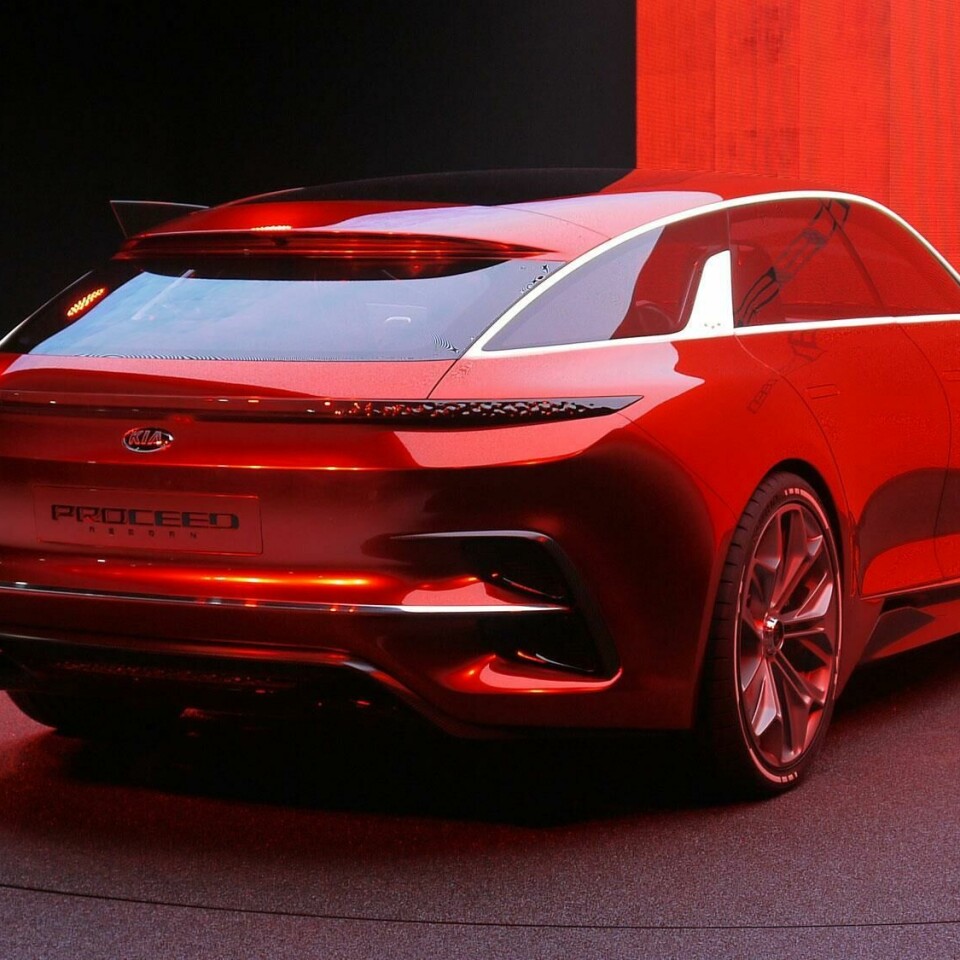
Frankfurt 2017: Peter Schreyer on Kia and Hyundai’s family ties
We chat to Kia-Hyundai’s chief design officer following the unveil of the Proceed Concept at Frankfurt
At the Frankfurt show we caught up with Peter Schreyer, president and chief design officer of Hyundai and Kia, right after the unveiling of the Kia Proceed concept.
Q: What does the Proceed concept tell us about the future of Kia design?
Peter Schreyer: It combines the clear and clean proportions and organised lines that we’re doing, but at the same time shows a “sexy” body. There’s a lot of three-dimensionality and a good stance. So I think that’s a good combination of things – it shows how we’re thinking at Kia.

The light signature around the windows, the DLO, is also interesting. It gives a bit of a hint of what might come. I think it’s a very unique way of defining character without using exaggerated bends in the sheet metal, all over the place without any order, which sometimes happens in the industry.
The Proceed is very simple. It’s got just one stripe as a tail lamp. And the most significant line is the DLO. That’s it.
Q: A strong chrome outline might also be read as retro, harking back to the 1960s or 1970s…
A chrome frame around the DLO is a standard thing that everyone has, but this is not just a normal frame, it’s very three dimensional. It tapers in towards the rear, and that little shark fin that goes up the C-pillar is quite special.

Q: Will the form language of the Proceed translate directly into production vehicles?
Wait and see. You will recognise some elements.
Q: Your role encompasses both Kia and Hyundai. How do you avoid having a favourite child
If you have more than one child you don’t have a favourite one. But they do have very different characters. For me the more interesting thing is to have them in competition. So the better one is, the more other one tries to be even better. Having two brands in the same group makes the whole process more ambitious and dynamic.

Q: Can designers from the two teams see each others’ work, or is there a bit of secrecy between the two?
I’m actually starting this process because I think it’s important to know and be aware of what the others are doing.
Q: Kia Stonic and Hyundai Kona are two recent crossovers on the same platform; how would you describe their differences?
They’re not on the same platform. They are completely different animals, so I don’t know why I have to compare them. Why not compare them to the Opel Mokka? I think both are very good competitors. They are in the same segment but they’re very different.

The Stonic has been developed especially for the European market, focusing on European demands, and it’s on the Rio’s platform. It’s a very agile, light little car. It offers really nice possibilities of playing with colour combinations, and a C-pillar that flows up into a kind of roll bar, which makes it unique. We first had that with the Provo concept.
The Kona is a car that has been developed for the whole world. It will go to America and so it has a different background. It has four-wheel-drive, making it more of an SUV but also heavier.

So I think it’s good to have two quite different competitors within the same group but they don’t really fish in the same pond. They were also developed totally independently, basically not knowing about each other.
Q: Do you still get time to design, or are you a manager of other designers these days?
I like to design – I’m a designer from my heart. I always go to see the models and talk with the designers and make suggestions, or try to lead them towards an idea. But I shouldn’t really design, because I can’t be in competition with the other designers.

Designers who are 25 or 30 years old have a different background, and come up with different new and fresh ideas that I wouldn’t think of.
Q: How do the big trends of autonomy and electrification shape what you’re doing at the moment?
Technology and design go together. Progress in the design of cars throughout history has always been founded on new technologies. This is what drives us.



